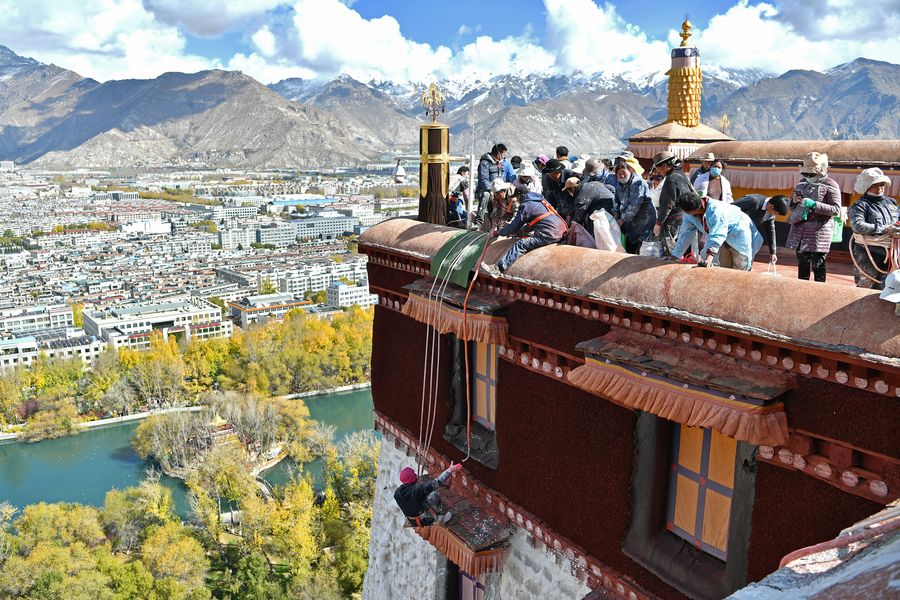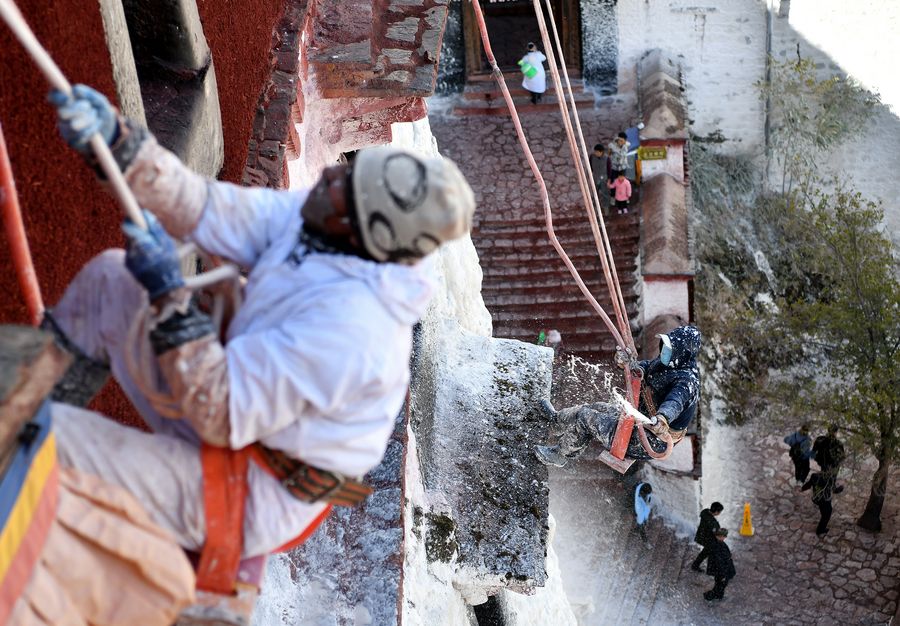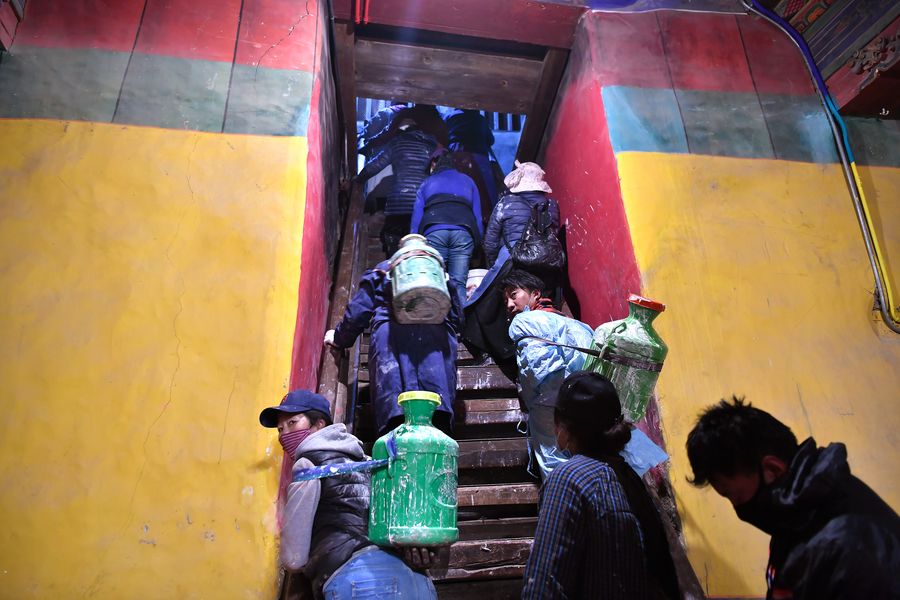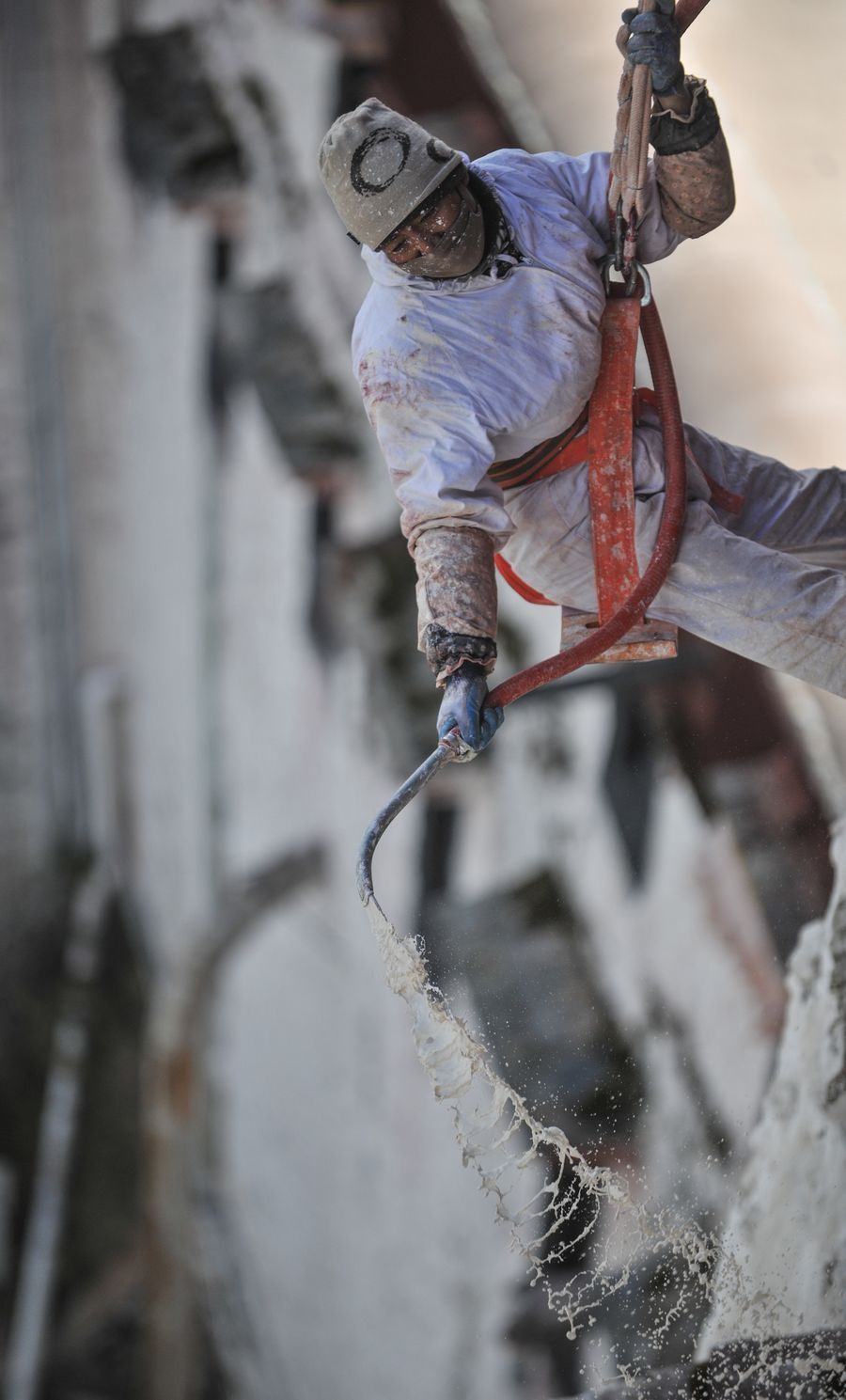The facelift usually takes about a dozen days as part of the preparation for the "Lhabab Duchen".
LHASA, Nov. 7, 2019 (Xinhua) -- The 1,300-year-old Potala Palace is a landmark of Lhasa in southwest China's Tibet Autonomous Region. It received 1.45 million tourists in 2017. The palace was included on the UNESCO World Heritage List in 1994.
Every year, workers and hundreds of local volunteers gather at the palace to give it a facelift. It usually takes about a dozen days to paint the palace in preparation for the forthcoming "Lhabab Duchen," which is believed to be the day the Buddha descended from the heavens and is one of four annual festivals celebrating important events in his life. The palace said it would open to visitors during the facelift.
The walls of the palace have four different colors: red, yellow, white and black. The red symbolizes authority, yellow prosperity, white peace, and black exorcism.
The locals believe that being part of the work can bring good luck to them and their families.

A worker paints the wall of the Potala Palace during an annual renovation of the ancient architectural complex in Lhasa, capital of southwest China's Tibet Autonomous Region, Nov. 1, 2019. (Xinhua/Li Xin)

Workers prepare to paint the Potala Palace during an annual renovation of the ancient architectural complex in Lhasa, capital of southwest China's Tibet Autonomous Region, Nov. 1, 2019. (Xinhua/Jigme Dorje)

Workers paint the wall of the Potala Palace during an annual renovation of the ancient architectural complex in Lhasa, capital of southwest China's Tibet Autonomous Region, Nov. 1, 2019. (Xinhua/Li Xin)

Volunteer worker Cering transports coating materials to paint the Potala Palace during an annual renovation of the ancient architectural complex in Lhasa, capital of southwest China's Tibet Autonomous Region, Nov. 1, 2019. (Xinhua/Chogo)

Workers paint the wall of the Potala Palace during an annual renovation of the ancient architectural complex in Lhasa, capital of southwest China's Tibet Autonomous Region, Nov. 1, 2019. (Xinhua/Li Xin)

Workers paint the wall of the Potala Palace during an annual renovation of the ancient architectural complex in Lhasa, capital of southwest China's Tibet Autonomous Region, Nov. 1, 2019. (Xinhua/Jigme Dorje)

Workers prepare to paint the Potala Palace during an annual renovation of the ancient architectural complex in Lhasa, capital of southwest China's Tibet Autonomous Region, Nov. 1, 2019. (Xinhua/Li Xin)

Workers prepare to paint the Potala Palace during an annual renovation of the ancient architectural complex in Lhasa, capital of southwest China's Tibet Autonomous Region, Nov. 1, 2019. (Xinhua/Chogo)

Workers prepare to paint the Potala Palace during an annual renovation of the ancient architectural complex in Lhasa, capital of southwest China's Tibet Autonomous Region, Nov. 1, 2019. (Xinhua/Jigme Dorje)

Workers prepare to paint the Potala Palace during an annual renovation of the ancient architectural complex in Lhasa, capital of southwest China's Tibet Autonomous Region, Nov. 1, 2019. (Xinhua/Li Xin)

Workers paint the wall of the Potala Palace in Lhasa, southwest China's Tibet Autonomous Region, Nov. 2, 2019. (Xinhua/Li Xin)

A worker participates in the whitewashing of the exterior of the Potala Palace in Lhasa, southwest China's Tibet Autonomous Region, Nov. 1, 2019. (Xinhua/Chogo)

A worker participates in the whitewashing of the exterior of the Potala Palace in Lhasa, southwest China's Tibet Autonomous Region, Nov. 1, 2019. (Xinhua/Chogo)

A worker paints the wall of the Potala Palace during an annual renovation of the ancient architectural complex in Lhasa, capital of southwest China's Tibet Autonomous Region, Nov. 1, 2019. (Xinhua/Jigme Dorje)■



